Comprehensive Analysis Center
Comprehensive Analysis Center, as the main part of supporting system to scientific research, was founded in 2007. This center has the qualification of CMA and is a public platform of analytical instrument and graduate training base. It has developed into a comprehensive inspection and certification laboratory, consisting of more than 30 large-scale instruments. It provides experimental methods and test data for the research of ecology, environment, hydrology, resources and other disciplines.
Comprehensive Analysis Center has established isotope analysis platform, inorganic analysis platform, organic analysis platform and conventional analysis platform, which is an important technical supporting platform for research innovation and development of the institute. It holds MAT 253 stable isotope ratio mass spectrometer system, inductively coupled plasma optical emission spectrometry (ICP-OES), inductively coupled plasma mass spectrometry (ICP-MS), liquid chromatography tandem mass spectrometer (LC-MS), gas chromatography-mass spectrometry (GC-MS), ion chromatography (IC), laser diffraction particle size analyzer and so on. It has the ability to analyze different targets from biological, water or soil samples, such as isotopes of C, H, O, N, constant or trace elements, and organic substances.

Name: Isotope Ratio Mass Spectrometry (IRMS)
Instrument Model: Thermo MAT 253
Introduction: The MAT 253 stable isotope ratio mass spectrometer system delivers the highest sensitivity and the highest precision for the determination of isotope ratios. H/D, 13C/12C, 15N/14N, 18O/16O isotope ratios can be analyzed by the MAT 253 with high precision. The system is unique in the capability to achieve precision measurements from the smallest amounts of sample. It ensures scientific research of ecology, environment, water circulation and so on.
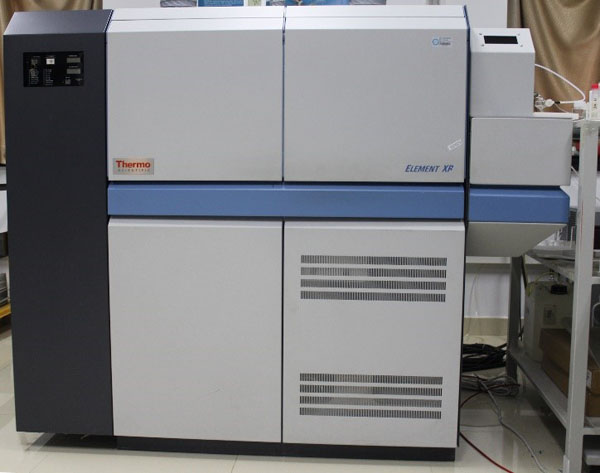
Name: Inductively Coupled Plasma Mass Spectrometry (ICP-MS)
Instrument Model: Thermo ELEMENT-XR/ Agilent 8900/ PerkinElmer DRC-e
Introduction: ICP-MS was considered as the technique-par-excellence for multi-element (ultra-)trace analysis with low limits of detection in a wide variety of fields. It gives powerful technical support to different departments. The nebulizer argon carries the sample aerosol from the nebulizer, through the injector tube and into ICP torch. The thermal energy from this plasma evaporates, atomizes the sample, then efficiently ionizes the atoms. Most of the plasma argon gas is rejected at the sampler cone and removed by a vacuum pump. The remaining ions pass through a second cone, the skimmer cone. Only ions of a particular mass/charge ratio can pass through the quadrupole mass spectrometer at any instant in time. The dual mode detector detects the ions pass by the quadrupole, producing an amplified signal that is processed by the detection electronics and sent to the computer for data processing. Electrical signals from the detection of the ions are processed into digital information that is used to indicate ion intensity and subsequently element concentration.

Name: Inductively Coupled Plasma Optical Emission Spectrometry (ICP-OES)
Instrument Model: PerkinElmer 5300DV/ Avio500/ Avio200
Introduction: ICP-OES can analyze multi-element faster and more easily. ICP-OES consists of three major components: sample introduction, the spectrometer and the ICP Source. The Optima Source is a dual-view (can be viewed either axially or radially) RF generator. In inductively coupled plasma-optical emission spectrometry, the sample is usually transported into the instrument as an aerosol through a process known as nebulization. The sample aerosol is then transported to the plasma where it is desolvated, vaporized, atomized, and excited and/or ionized by the plasma. The excited atoms and ions emit their characteristic radiation which is collected by a device that sorts the radiation by wavelength. The radiation is detected and turned into electronic signals that are converted into concentration information for the analyst.

Name:Liquid Chromatography Tandem Mass Spectrometer (LC-MS)
Instrument Model: Shimadzu LCMS-8045
Introduction: The LCMS-8045 has high sensitivity in its class, equipped with a heated ESI probe. It can give qualitative and quantitative analyses of toxic organic, which has been the essential method to measure the distribution of toxic substance. The matter heated ESI probe, high-temperature heating block, desolvation line (DL) and drying gas, all act to promote desolvation and prevent contamination due to the penetration of liquid droplets into the MS unit. This improves the robustness, so reliable and high-accuracy data can be obtained over the long term. The LCMS-8045, with ultra-high-speed and high-sensitivity, is extensively used in food safety, environmental analysis and other quantitative analyses.
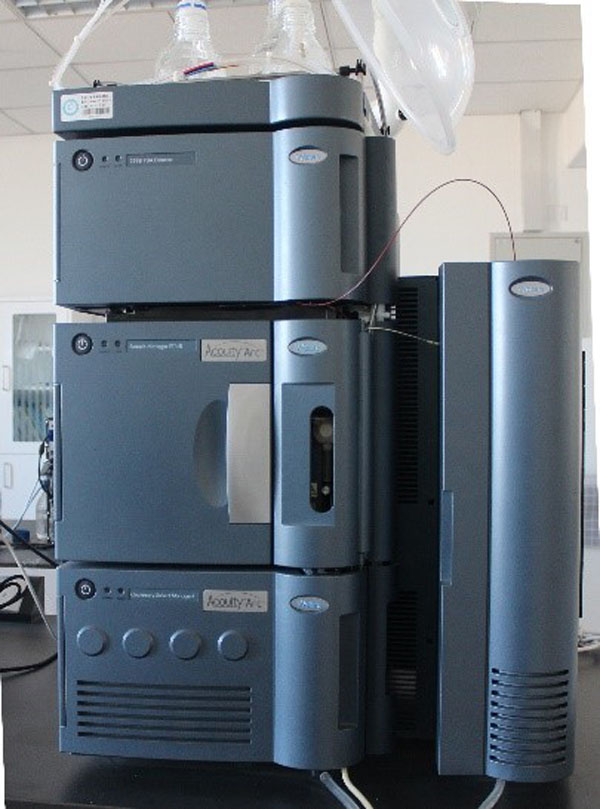
Name: High Performance Liquid Chromatograph (HPLC)
Instrument Model: Waters ACQUITY ARC
Introduction: The ACQUITY Arc System is a quaternary-based, modern LC system. The instrument includes two flow path, four element pump, on-line degassing, automatic plunger cleaning, 96 hole position automatic sampler, column chamber and diode array detector, which has the characteristics of fast sampling speed, high sensitivity and high separation. It is mainly used for the quantitative analysis of non-volatile organic compounds in soil, sediment, atmospheric particulate matter, sludge compost and other samples.
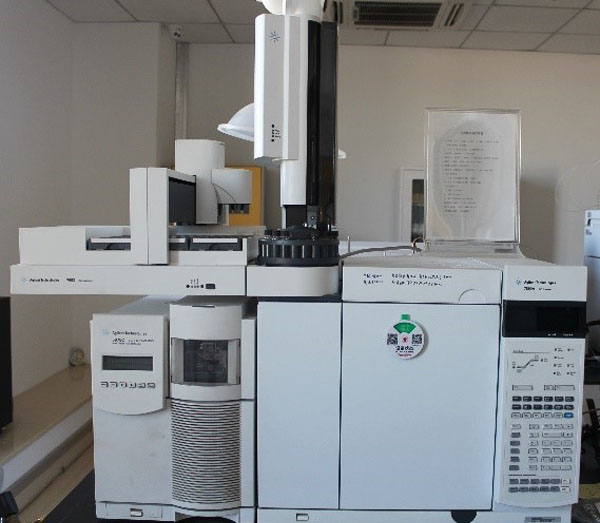
Name: Gas Chromatography-Mass Spectrometry (GC-MS)
Instrument Model: Agilent 7200 GCMS QTOF/ 7890A-5975C
Introduction: Gas chromatography-mass spectrometer has been an important method to determine relative molecular mass, molecular formula and molecular composition. It has the features of fast analysis, high sensitivity and stable analysis results. It is composed by three parts: gas chromatography, mass spectrometry and data processing system. Gas chromatography is on the basis of different boiling point, polarity and adsorbability of various substance to separate mixtures; Mass spectrometry is the detector of chromatography, which can collect data by computer storage and processing. The result can give not only the picture of total ion current, but also the mass spectrogram of each chromatographic peak. The automatic retrieval of standard spectrum can give the compound molecular structure information. All kinds of samples like gas, liquid and solid which can be dissolved by proper solvent can be analyzed by GC-MS. This instrument is used in environment analysis, pharmaceutical analysis and food analysis, as well as medical science and bioanalysis field. GC-MS has been a powerful tool to identify organic substance.
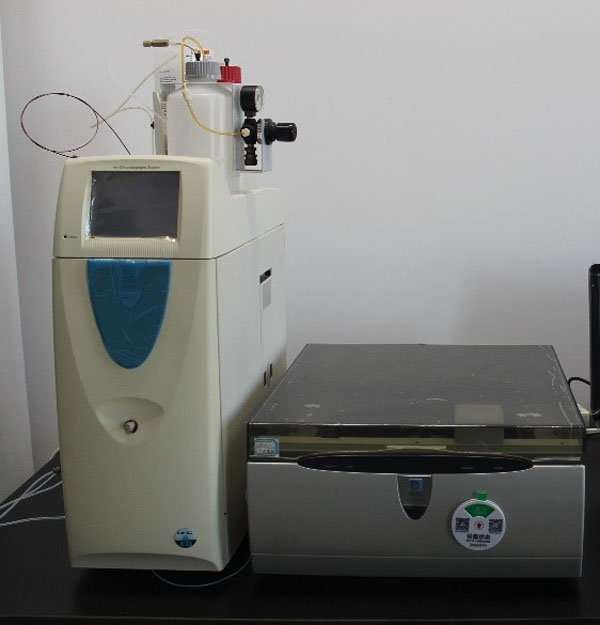
Name: Ion Chromatography (IC)
Instrument Model: Thermo ICS2100
Introduction: Ion chromatography is based on the exchange interaction which happened on the activity of ion exchange groups and sample ions and mobile phase ion exchange leaching ions, ions in samples and the exchange groups in chromatography column have the interaction: exchange-elution-exchange-elution. The sample ions eluted by eluent into the detector is in the form of Gaussian distribution pattern of peaks. In certain conditions of the chromatographic, the outflow time is the retention time, which is fixed as the basis of ions qualitative. In a certain concentration range, the peak area of components (or peak height) is proportional to the concentration of components, quantitative result is given by integrating, the process is described by the picture.
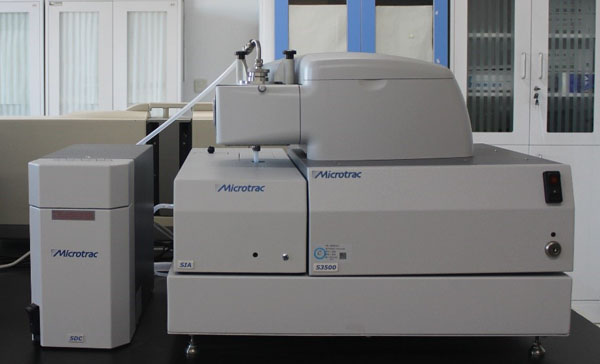
Name: Laser Particle Size Analyzer
Instrument Model: Malvern Mastersizer 2000/ Microtrac S3500
Introduction: The particle size analyzer is the laser diffraction system, offering the Mastersizer range of particle size analyzers. It measured particle sizes ranging from 0.02 to 2000 μm, which is controlled by the Standard Operation Procedure (SOP). It gives simple development and transmission method to finish whole operation with high accuracy and high repeatability. The Mastersizer 2000 is based on dispersion phenomenon and laser acts as the light source. Big particles generate small scattering angle, small particles generate big scattering angle, accordingly.
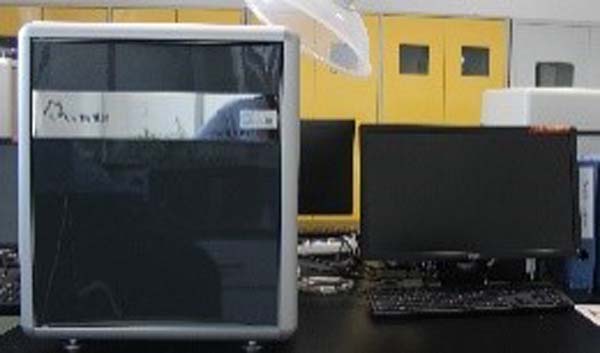
Name: Elemental Analyzer
Instrument Model: Elementar /Vario MACRO Cube
Introduction: The vario MACRO cube is a macro elemental analyzer for simultaneous carbon, hydrogen, nitrogen, and sulfur determination from one sample. The vario MACRO cube, combined with its outstanding precision, is a versatile and reliable workhorse for the analysis of soils, fossil fuels, and derived samples. The packed sample is burned and decomposed in the combustion tube filled with catalyst. Then the impurity gas was removed, and the component gas of each element that needs to be tested is separated and detected by a thermal conductivity detector (TCD) or infrared detector (IR). It can realize simultaneous CHNS determination with highest precision and accuracy. Now it is mainly used for the determination of solid samples such as soil, plants, sediment and compost.
Download attachment: